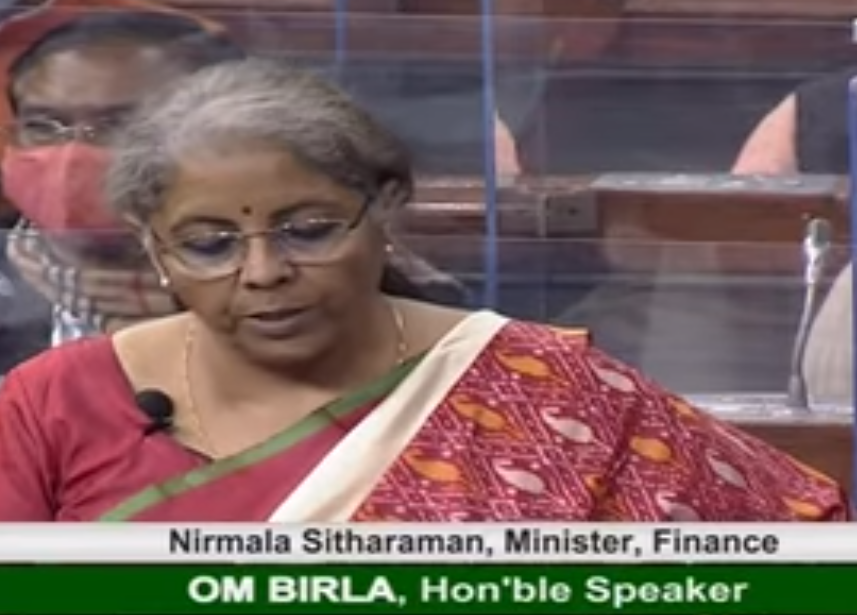
 Commenting on the Union Budget 2021, Suman Reddy, managing director, Pega India said, “As the first budget during recovery of the pandemic, we are optimistic that the slew of measures announced on healthcare and infrastructure will provide impetus to the economy. The agenda to focus on the six pillars including infrastructure, innovation and R&D clearly sets India on a path of recovery.
Commenting on the Union Budget 2021, Suman Reddy, managing director, Pega India said, “As the first budget during recovery of the pandemic, we are optimistic that the slew of measures announced on healthcare and infrastructure will provide impetus to the economy. The agenda to focus on the six pillars including infrastructure, innovation and R&D clearly sets India on a path of recovery.
In a significant break from tradition, Government’s Atmanirbhar package focuses on increasing spend towards the creation of jobs and rural development, generous allocations for development schemes, handing more monetary benefits to the common man, and easing rules to attract foreign investments. Enhancing the digital backbone of the country, the announcement on the fintech hub at the GIFT -IFSC and R&D investment of 50,000 crores over 5 years will ensure that the overall research ecosystem of the country is strengthened with a focus on identified national priority thrust areas. The move to establish a National Digital Educational Architecture (NDEAR) in the context of a Digital First Mindset to ensure digital learning, as well as planning infrastructure, will empower the youth of the nation.
Commenting on the Union Budget 2021, Sudhindra Holla, Director, Axis Communications, India & SAARC said, “We are upbeat on the six pillars of the government agenda including focus on infrastructure, innovation and R&D that is all set to strengthen India’s power as a global digital hub. We are optimistic by the renewed focus on road safety with advanced traffic management system with speed radars, variable message signboards, GPS enabled recovery vans along with the outlay of ₹ 2.28 lakh crores for developing the highways, roads, and railways. Good to see pertinent steps taken to revitalize the economy with key focus on allocating budget for healthcare, metro railways, ports, airports, and logistics to boost urban infrastructure. These in turn will be stepping stones towards invigorating Smart Cities planning and urban development and help in generating more jobs.”

Nikhil Rungta, Country Manager, India, Verizon Media commented “Taking insights from the learning curve of Covid-19, the government has done well to take appropriate measures to improve the lives of citizens and pave way for economic recovery.”
“This is a ‘get well’ budget with an expansionary outlook and focused on growth. Given the times it might not be a radical budget, but it is practical and thoughtful, which will propel consumption and growth of business. This budget has also rightly signalled the need for greater inclusion in India’s workforce. Women being allowed to work in all sectors and in night-shifts with adequate protection, and social security benefits extended to gig workers will provide an impetus for women to step up their contribution towards Aatmanirbhar Bharat.”

Vamsi Krishna, CEO & Co-founder, Vedantu– a pioneer in LIVE and Interactive online tutoring platform commented that “The National Education Policy has been a strategic move towards guiding the development of India’s education. To strengthen the policy further, this Union Budget is focusing on initiatives like National Digital Educational Architecture (NDEA) which will provide a diverse education eco-system for the development of digital infrastructure, educational planning, governance and administrative activities. The complete shift from using assessments to not only judge the cognitive levels of the learner but also using it as an opportunity to identify the unique strengths and the potential, is a student-centric approach that will lead to the holistic development of a child and provide them a greater edge, globally. Further, I would like to see more investments & budget allocation to go into the education sector to enhance it with more trending technologies which will make education accessible to students in the farthest corners of the country.”

Commenting on the Union Budget 2021, Balajee Sowrirajan, Managing Director, Samsung Semiconductor R&D (SSIR) “We are very optimistic with the focus given on Innovation and R&D being identified as one of the key pillars, I believe ‘Design for India’ will gain momentum and localization of product designs will lead towards an aspirational and Innovative India. These will lead to the next phase of inclusive growth with increased emphasis on skilling and job creation. Furthermore, with a significant increase in Capex from 4.39 lakh crore to 5.54 lakh crore, the Atmanirbhar Bharat Initiative will be strengthened with more focus on domestic manufacturing and production, laying the foundation for the 5 Trillion Dollar Economy by 2030.”




